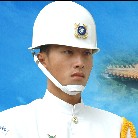| The
National Revolutionary Martyrs' Shrine occupies an area of
5 hectares. It is northern-palace style architecture, built
mainly for worshipping martyrs who helped founding our country.
The martyrs' tablets are placed in the shrine in the Main
Hall. On the left hand side of the shrine is the tablet of
Chinese people's ancestor, Yellow Emperor, while on the right
is the portrait of Dr. Sun Yat-sen, our nation's founding
father. We invited Professor Teng Tien-De, former Dean of
Local and Rural Research Center, Taipei Municipal University
of Education, to explain to us the design concepts of Martyrs'
Shrine. We also referred to and quoted from An Introduction
to Traditional Taiwanese Southern-Min Style Architecture to
illustrate in this following page.
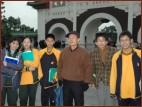 |
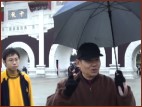 |
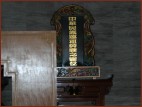 |
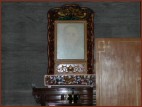 |
| Professor
Teng Tien-De |
Tablet of
Chinese people's Ancestor, Yellow Emperor |
Portrait
of Dr. Sun Yat-sen, Founding Father of Republic of China |
Wu-Dian
Wu-Dian is a four-slope roof that covers all
sides. The roof used on the Main Hall of Martyrs' Shrine is
Wu-Dian, which symbolizes the highest social ranking in ancient
China. Wu-Dian can only be used on imperial palaces and temples.
The Wu-Dian on the Main Hall of Martyrs' Shrine is a double-eaves
style roof, which is even more highly ranked.
Gable
& Hip Roofs
Roofs with an upper layer of overhanging gable
roof or flush gable and lower layer of Wu-Dian (four-slope roof)
are called Gable & Hip Roofs. They rank only second to Wu-Dian.
Originally Gable & Hip Roofs used to appear only on government
office or official bureaus, but nowadays Gable & Hip Roofs
appear on some civilian residences, too. On the martyrs' hall
of National Revolutionary Martyrs' Shrine are Gable & Hip
Roofs.
| Please
move your cursor and click on the picture. |
Zhengwen
Zhengwen is the intersect of the main ridge
and diagonal ridge gripped by two mythical animals. Usually
the mythical animals can be an owl, a fish, or a hornless dragon,
which according to Chinese mythology has super power to suppress
the fire god. A sword is on each of these mythical animals'
back to prevent the end of the ridge from fire.
Glazed Ceramic Tiles
Since Ching Dynasty, the imperial yellow glazed
ceramic tiles are reserved for the emperor. It is of the highest
status, and can only be used in imperial palaces and temples.
The following colors of galzed ceramic roof tiles according
to its rank are green(prince), blue(national temple), red(annex
residence), purple(annex residence), and black(civilian residence).
Wa-tang
Ancient eaves tile(Wa-tang) is placed at the
end of round tiles. There are patterns inscribed on wa-tang.
The pattern of wa-tang of Martyrs' Shrine is plum blossom, the
national flower of Republic of China.
Drip Tile
The water-drip shape tile fixed between two
wa-tangs, also known as rain tiles, because rain falls from
here. The pattern on the drip tiles of Martyrs' Shrine is plum
blossom.
Bracket or Cantilever
- Dou-gong
Dou-gong is placed on the column's cap or corbel,
inlayed with square wood and elbow-shape wood.
Dragons Pattern
Dragons pattern represents the highest status.
They can only be used on imperial palaces or temples. The Main
Hall, Main Gate and martyrs' hall in National Revolutionary
Martyrs' Shrine were built with dragons pattern on them, mainly
in blue and green color.
| Place
move your cursor and click on the menu. |
A
Celestial and Mythical Animals
The celestial being and the mythical animals
on the roof ridge indicate the royal status of the resident.
They are believed to protect the building from fire and disasters.
Different odd numbers of animals represent the rank of the palace.
The highest rank number is 9, followed by 7, 5, 3 and 1. Three
animals are on the Chinese Gateway of Martyrs' Shrine, five
on the office, five on the Bell Tower, five on the martyrs'
hall, and seven on the Main Hall.
| Place
move your cursor and click on the totem of the animals. |
Stone
Lion
In front of the Main Gate of Martyrs' Shrine
are two stone lions. On the left is the male stone lion, which
touches a ball in its right palm; on the right is the female
stone lion, which touches a baby lion in its left palm.
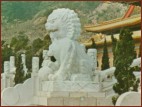 |
 |
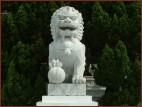 |
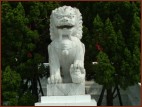 |
| Male
Stone Lion just finished in 1969 |
Female Stone
Lion just finished in 1969 |
Restored
Male Stone Lion Now |
Restored
Female Lion Now |
| Information
provided by Yao Yuan-Chung, the Architect |
Photos
by Li Jyun-Jhih |
Website Translated
by Ou Yang Pei-ting(  Top )
Top ) |
|
